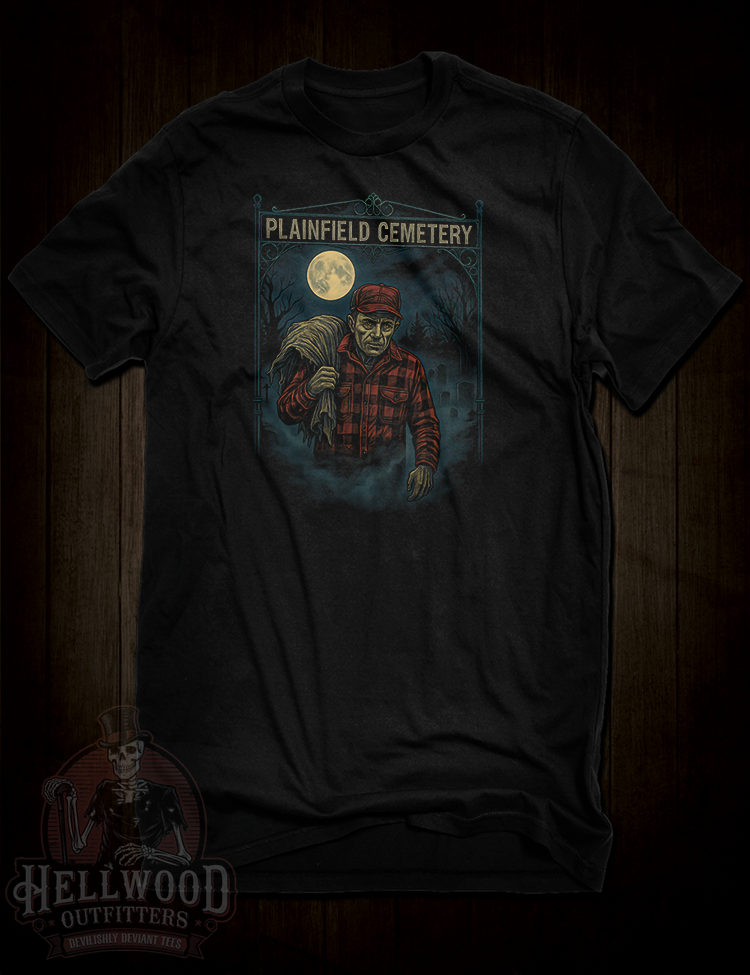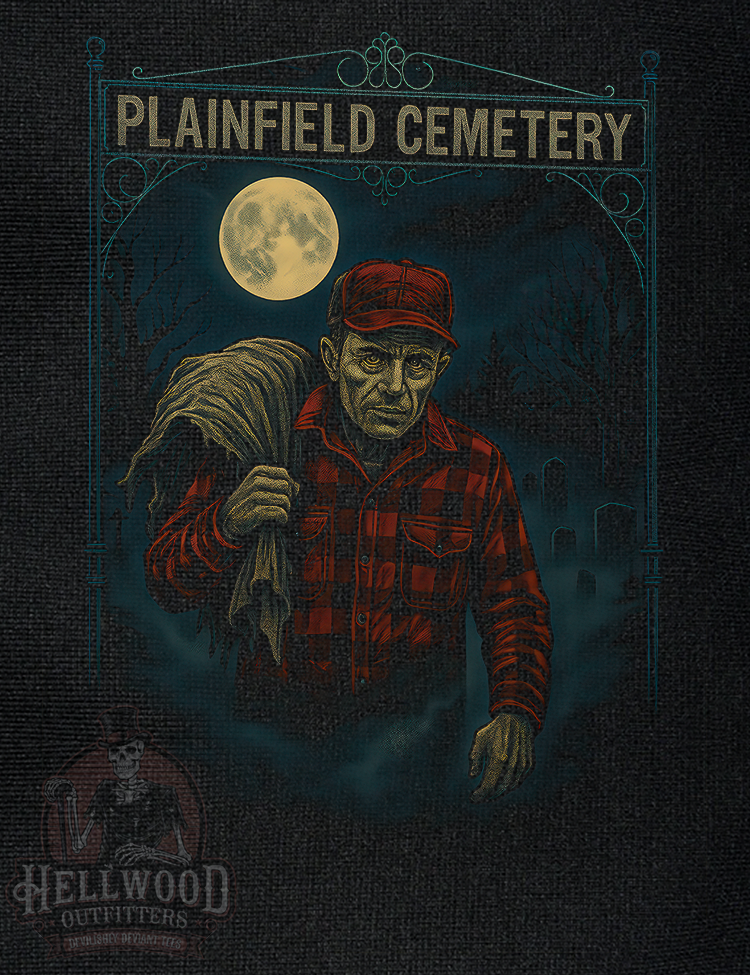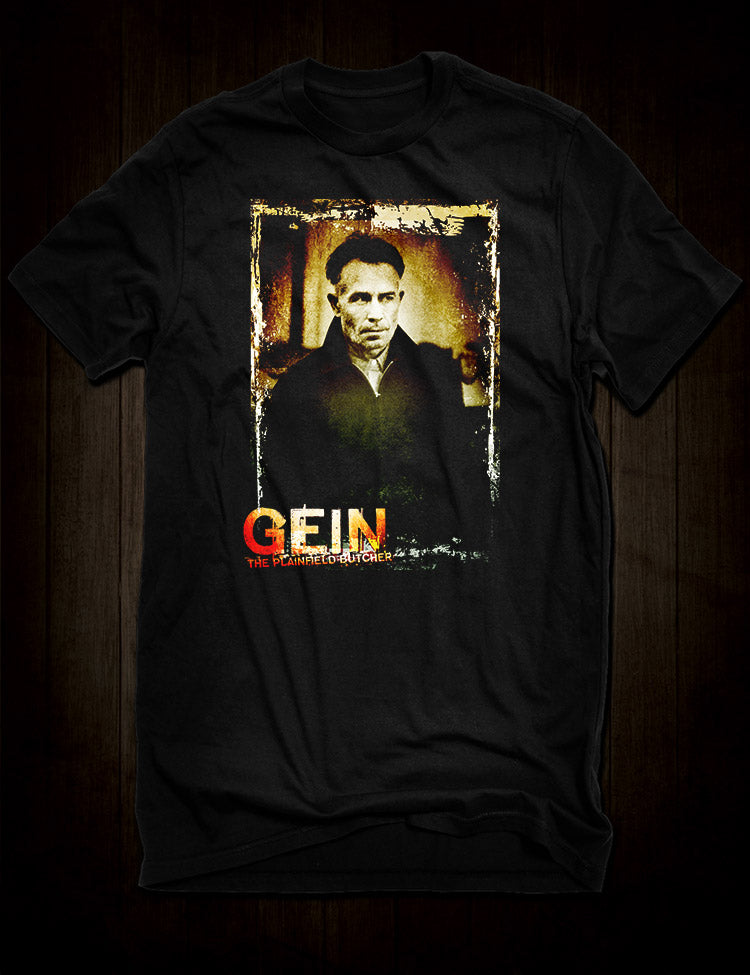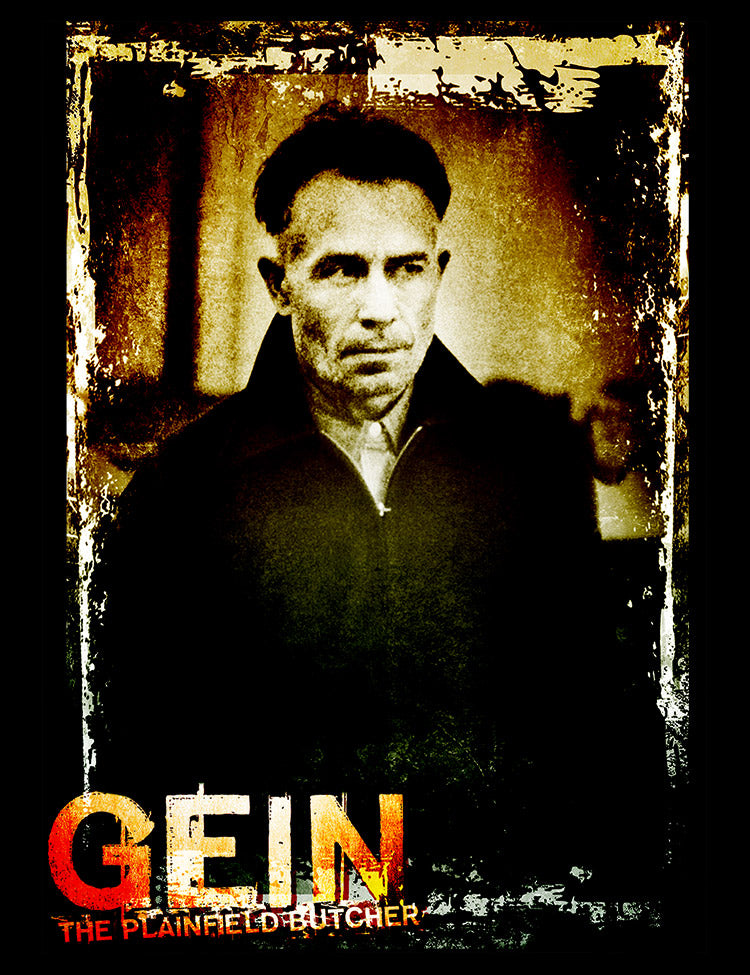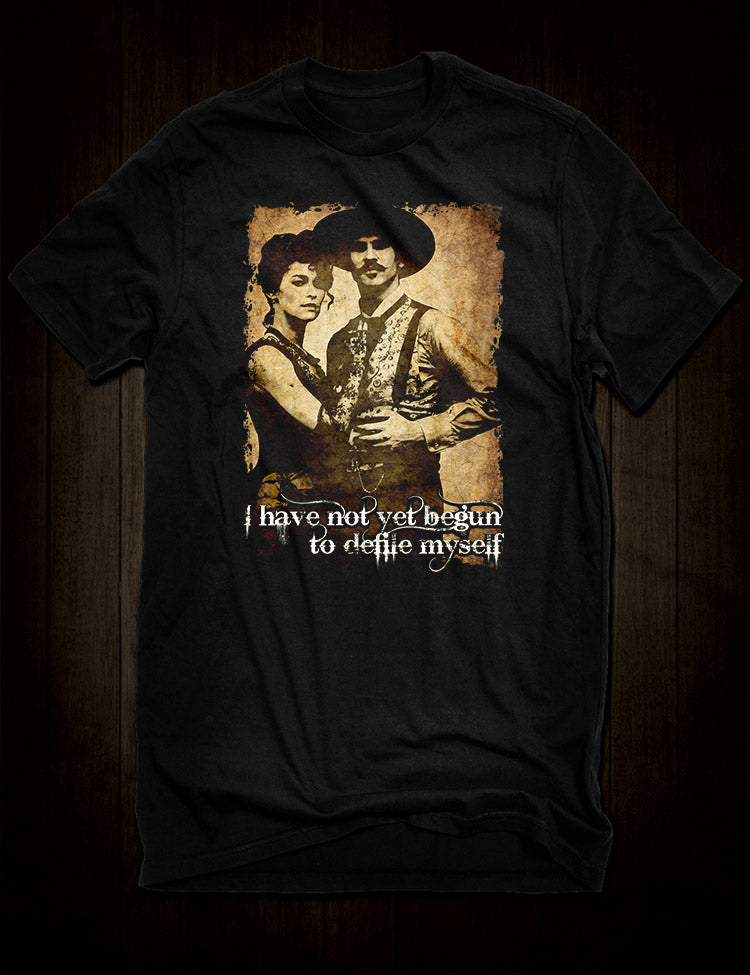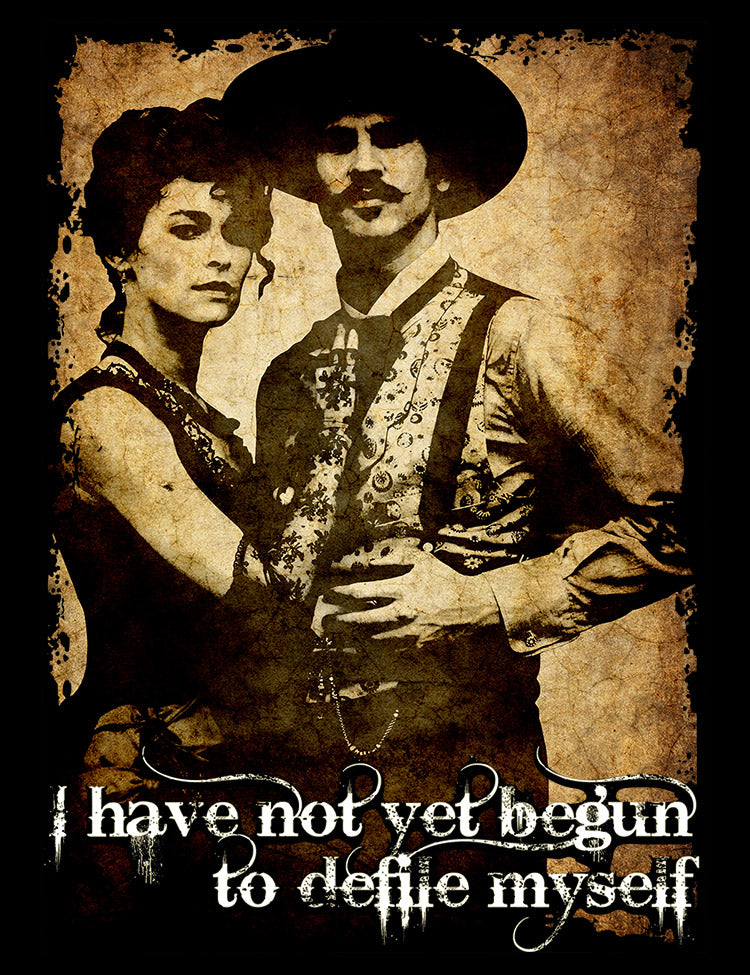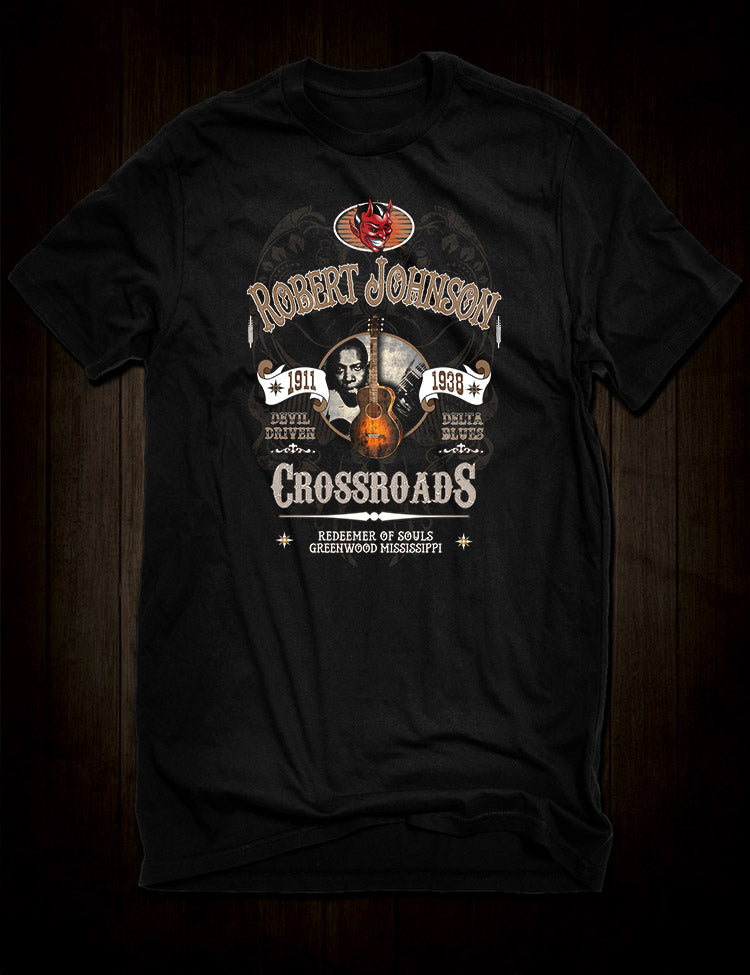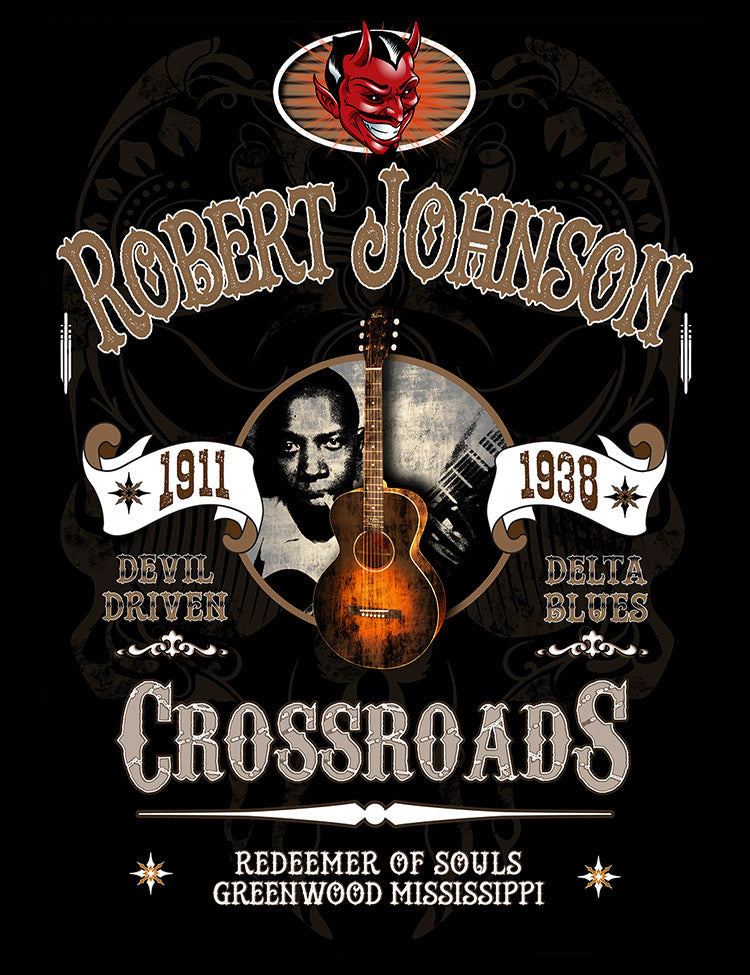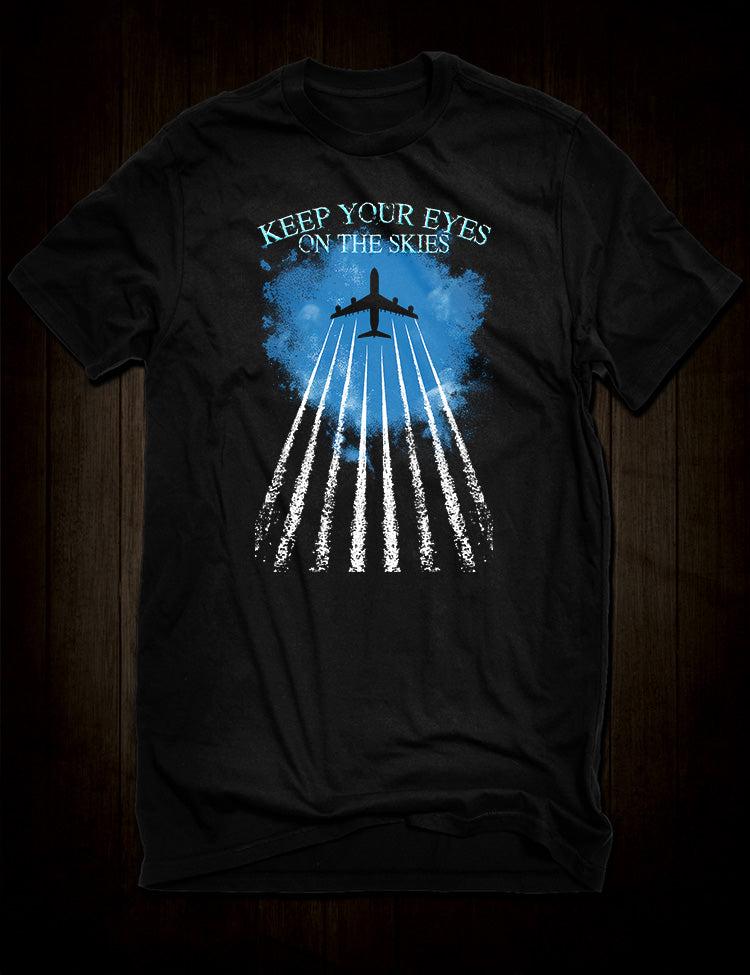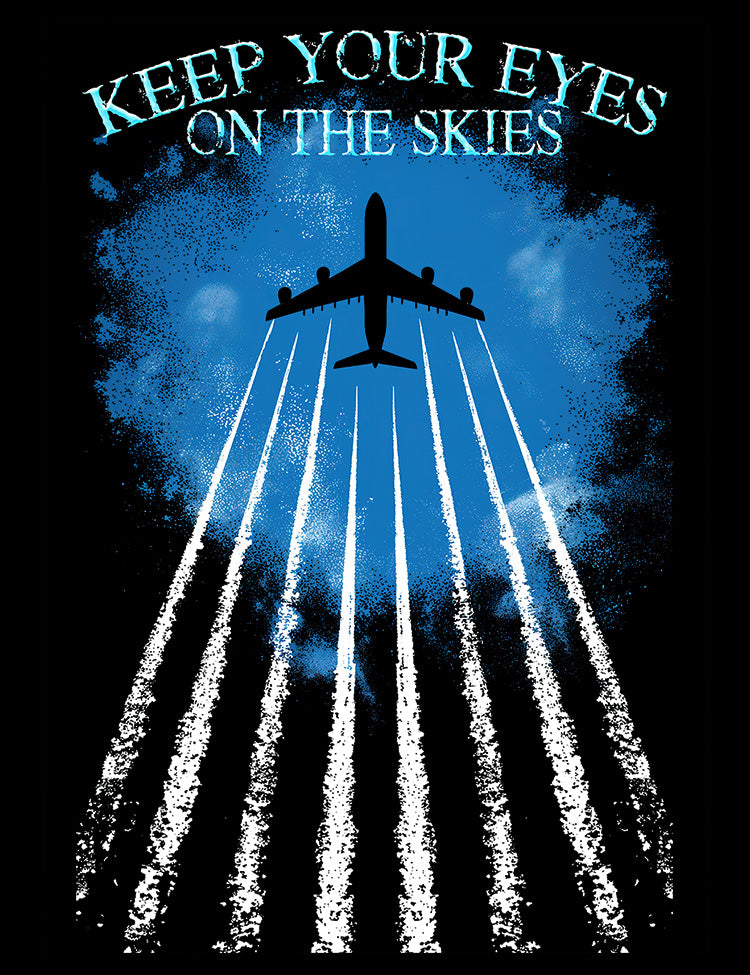
Occult Symbolism, Midnight Movies, and the Birth of 1960s Cult Cinema

Introduction: Cinema, Counterculture, and the Lure of the Hidden
Cinema has always been a medium of shadows. Projected light conjures images larger than life, dissolving the boundary between illusion and reality. In the 1960s, as social and political revolutions reshaped the Western world, cinema became something more than entertainment. It became ritual, revelation, and rebellion. And nowhere was this more evident than in the cult films that drank deeply from the well of the occult.
The occult had always haunted the margins of popular culture, but in the ’60s it exploded into view. Tarot cards sold alongside psychedelic posters. Aleister Crowley’s face stared out from the cover of Sgt. Pepper. Magazines mixed astrology with civil rights editorials. In Britain, the repeal of old witchcraft laws and the rise of Wicca suggested a hunger for older, more secret traditions. In America, LSD and yoga classes pointed toward transcendence, hidden knowledge, and the dream of expanded consciousness.
Cult cinema mirrored and magnified these changes. Directors steeped in underground art, esotericism, or simply a desire to provoke used occult symbols as both weapon and mirror. In the hands of filmmakers like Kenneth Anger, occult imagery wasn’t decorative—it was structural. Ritual informed narrative. Symbol replaced plot. Film became magic. At the other end of the spectrum, horror studios like Hammer cashed in on Satanic panic, producing films that titillated and terrified with lurid black masses. Together, these strands formed a cinematic tapestry where the occult wasn’t a gimmick but a foundation.
This essay traces the occult roots of cult cinema in the 1960s. It will explore how cultural shifts made occultism fashionable, how figures like Crowley cast long shadows over celluloid, and how experimental and mainstream filmmakers alike found themselves invoking demons, witches, and gods. To understand cult cinema of the ’60s is to understand how the occult moved from secret lodges into everyday life—and onto the big screen.

1. The Cultural Climate: Why the Occult Flourished in the 1960s
The 1960s were a decade of upheaval. In Britain, the empire was shrinking; in America, the civil rights movement challenged entrenched power. Across Europe, young people revolted against tradition. In that climate, the occult offered both escape and empowerment.
A Crisis of Authority
Post-war Britain was grey and stifling. The trauma of the Blitz and the rationing that dragged into the ’50s left a sense of exhaustion. For younger generations, the church, the monarchy, and the state no longer carried unchallenged authority. In the United States, Vietnam and the assassinations of Kennedy and King shattered faith in government. Where faith falters, alternative systems of meaning thrive. Astrology columns in tabloids became as influential as political commentary. Tarot readers did brisk trade alongside psychiatrists. People turned to the occult not only for thrills but for guidance.
The Counterculture and Mystical Yearning
The counterculture was restless for transcendence. Hippies in Haight-Ashbury dropped acid and quoted the Tibetan Book of the Dead. British mods read Colin Wilson’s The Occult: A History. Underground presses sold grimoires alongside protest pamphlets. Mysticism promised a fusion of political and personal liberation. If society was corrupt, perhaps the stars or secret rituals could offer a path to freedom.
Psychedelics played a vital role. LSD and mescaline didn’t just alter perception—they created a hunger for the hidden. Users described visions of unity, archetypes, and cosmic forces. This language dovetailed with the occult’s promise of “secret knowledge.” Timothy Leary told young people to “turn on, tune in, drop out”; Crowley had once told his disciples to “Do what thou wilt.” Across decades, the messages harmonised.
Revival of Witchcraft and Pagan Traditions
In 1951, Britain repealed the Witchcraft Act of 1735, which had criminalised claims to magical powers. Almost immediately, figures like Gerald Gardner brought Wicca into public view, presenting it as an ancient fertility religion. By the mid-1960s, witchcraft covens operated openly in Britain. Newspapers delighted in photographs of robed initiates dancing under the full moon. At the same time, the burgeoning feminist movement found in the witch a potent symbol of female power and resistance.
Cult cinema couldn’t resist. From Hammer’s The Devil Rides Out to underground rituals staged on 16mm film, witches and satanists became cinematic shorthand for rebellion, secrecy, and danger.
Aleister Crowley’s Posthumous Fame
Crowley died in 1947, but his afterlife truly began in the 1960s. Once dismissed as a scandalous charlatan, he was reborn as a countercultural saint. Beat poets cited him, rock stars collected his writings, and his image appeared alongside Marx and Lennon as a symbol of resistance to conformity. For young artists, Crowley offered permission to transgress. His writings on magick, sex, and individual will found new resonance in an era obsessed with liberation.
Kenneth Anger, the underground filmmaker who would become one of the decade’s defining occult auteurs, was himself a Crowley devotee. To him, cinema was not merely narrative but ritual—a way to channel archetypal forces. Through Anger, Crowley’s spirit bled directly onto the screen.
Cinema and the Occult as Parallel Experiences
There was also a deeper kinship between cinema and the occult. Both involve suspension of disbelief, immersion in ritual, and transformation through symbols. A darkened theatre resembles a temple: initiates gather, lights dim, images flicker, and the audience is transported. For an audience primed by psychedelia and mystical experimentation, cinema itself began to feel like a magical rite. Cult filmmakers seized this, turning screenings into initiations.
The Ground Was Prepared
By the end of the 1960s, the occult was everywhere: on record covers, in fashion magazines, in pulp paperbacks and student protests. It was both serious spirituality and fashionable affectation. Into this fertile ground, cult cinema planted its roots. What followed was not merely horror films with satanic villains, but a cinema that tried to harness the occult’s deeper power: the promise of hidden truths and the thrill of forbidden knowledge.

2. Aleister Crowley’s Shadow Over Cinema
If the 1960s was the decade in which the occult went mainstream, then Aleister Crowley was its most unlikely poster boy. Dead since 1947, bankrupt, addicted to heroin, and branded by the tabloid press as “the wickedest man in the world,” Crowley seemed an unlikely candidate for cultural resurrection. Yet by the middle of the ’60s, his presence hovered everywhere: on record covers, in the writings of poets and provocateurs, and, crucially, in the imagery of cult cinema.
From Outcast to Countercultural Saint
During his lifetime, Crowley was an object of scandal and fascination. A mountaineer, poet, ceremonial magician, and self-styled prophet of the New Aeon, he had been a lightning rod for controversy. His libertine philosophy—summed up in the infamous dictum “Do what thou wilt shall be the whole of the Law”—seemed tailor-made for an era questioning authority. By the 1960s, Crowley’s writings on magick, ritual, and the cultivation of individual will looked less like blasphemy and more like radical self-liberation.
Beat writers like William S. Burroughs nodded toward Crowleyan notions of cut-up reality and personal gnosis. The countercultural press reprinted his manifestos. Musicians were enthralled: the Beatles placed his face on the cover of Sgt. Pepper’s Lonely Hearts Club Band in 1967; Led Zeppelin’s Jimmy Page became one of the world’s most famous Crowley collectors, eventually buying his former home, Boleskine House, on the banks of Loch Ness.
What mattered for cinema was not just the celebrity glamour but the language of symbols Crowley had pioneered: ritual robes, sigils, sexual rites, Tarot archetypes, the union of Eastern mysticism and Western esotericism. His vision of magick as performance—the idea that ritual action could transform reality—resonated deeply with filmmakers who were beginning to see cinema itself as ritual.
Kenneth Anger: Crowley’s Disciple with a Camera
No filmmaker embodied Crowley’s cinematic afterlife more than Kenneth Anger. Born in California in 1927, Anger was already notorious in avant-garde circles by the time the ’60s arrived. His short films were kaleidoscopic bursts of imagery, blending homoeroticism, surreal montage, and pop iconography. But underneath the camp glamour was a devout Crowleyan sensibility.
Anger was a member of the Ordo Templi Orientis (O.T.O.), the magical order associated with Crowley. He described himself as a magician as much as a filmmaker. For him, the camera was an altar and the editing suite a ritual chamber. His films weren’t entertainment but magical invocations.
-
Inauguration of the Pleasure Dome (1954, revived throughout the ’60s) staged a psychedelic masquerade of gods and goddesses, its cast including occultists and underground artists. The film, screened at festivals and midnight showings, became a touchstone for those seeking a cinematic ritual experience.
-
Scorpio Rising (1963) mixed biker culture with Nazi fetishism, pop music, and religious iconography. Though not explicitly occult, its montage operated like ritual symbolism: repetition, transgression, initiation through imagery.
-
Most explicitly, Lucifer Rising (begun in the late ’60s, completed in the ’70s) was a direct Crowleyan work. Anger envisioned it as a magical ritual on film, invoking Lucifer not as devil but as light-bringer, a symbol of rebellion and illumination.
Anger’s films circulated through underground circuits, art houses, and student unions, building a cult reputation. Watching them was less like seeing a story and more like attending a rite. For audiences experimenting with psychedelics, his work confirmed cinema as a psychedelic-ritual technology.
Cinema as Ritual, Crowley as Prophet
Crowley had written of magick as “the science and art of causing change to occur in conformity with will.” Swap “magick” for “cinema” and the resonance is clear. The director imposes his will on reality, reorders time and space through montage, and induces altered states in the audience. This parallel wasn’t lost on filmmakers like Anger or on theorists writing in the wake of the French New Wave. Cinema, like ritual, was transformative.
For the mainstream, Crowley’s presence was more atmospheric. Hammer Studios’ The Devil Rides Out (1968) drew directly on imagery popularised by Crowley’s press reputation: goat-headed demons, black masses, sinister cult leaders modelled on “The Great Beast.” Exploitation filmmakers used Crowleyan archetypes as shorthand for danger and forbidden power. Even when his name wasn’t invoked, his shadow loomed over the era’s depiction of the occult.
The Allure of Transgression
Why did Crowley resonate so powerfully in the ’60s? Part of the answer lies in his defiance of convention. He rejected Christianity, patriotism, sexual repression, and bourgeois respectability—all the things the counterculture was rebelling against. To invoke Crowley was to strike a blow at conformity. He embodied danger, liberation, and the thrill of the forbidden.
For filmmakers seeking to shock, to scandalise, or to offer audiences a glimpse of hidden truths, Crowley provided a ready-made vocabulary. Ritual robes, arcane symbols, and whispered mantras carried cultural charge. Even audiences unfamiliar with his writings recognised the atmosphere of transgression.
From the Lodge to the Cinema Screen
By the close of the 1960s, Crowley was firmly established as part of pop culture. His face adorned posters and albums; his rituals inspired performance art; his philosophy lent weight to cinema that sought to be more than narrative. Cult cinema had found in him not only a figure of scandal but a blueprint for cinematic magic.
Where once he had been derided as a charlatan, by the 1960s he had become the ghostly patron saint of cult film—his doctrines of will, ritual, and symbol seeping from occult lodges into underground theatres. Kenneth Anger’s invocation of Lucifer through film stock, Hammer’s lurid satanists, and the underground’s fascination with transgression all owed a debt to “The Great Beast.”
Crowley’s shadow gave cult cinema of the 1960s both its imagery and its swagger. Without him, it might still have flirted with witchcraft or horror; with him, it became ritual, rebellion, and myth.

3. Kenneth Anger: Magus of the Underground
If Aleister Crowley’s shadow haunted cult cinema, then Kenneth Anger was its high priest with a camera. Few filmmakers embodied the marriage of the occult and the moving image more completely. In Anger’s work, cinema ceased to be mere narrative or spectacle; it became ritual—a ceremony in celluloid designed to invoke forces, disturb boundaries, and transform consciousness.
The Visionary Outsider
Born in California in 1927, Anger grew up in Hollywood’s orbit but always felt himself outside it. As a teenager, he produced Fireworks (1947), a startlingly homoerotic short that depicted dreamlike violence and desire. It became a landmark in queer cinema, but it also revealed Anger’s lifelong method: using film as a dream-ritual where archetypes, violence, and sexuality intermingled.
By the late 1950s, Anger was immersed in the underground art world of Europe and the U.S., living in Paris, mingling with Cocteau, Anaïs Nin, and the Surrealists. He was also increasingly committed to occultism, formally aligning himself with Crowley’s Ordo Templi Orientis (O.T.O.). For Anger, cinema was not just art—it was magick. His camera was an instrument of invocation.
Inauguration of the Pleasure Dome (1954, revived in the ’60s)
Although made in the mid-1950s, Inauguration of the Pleasure Dome found its true audience in the ’60s. It was screened at underground festivals, art houses, and psychedelic gatherings, often with live or improvised soundtracks (The Beatles’ Sgt. Pepper’s was reportedly paired with it in some screenings).
The film is a 40-minute riot of colour, costume, and archetypal figures: Kali, Pan, Osiris, the Scarlet Woman. Characters appear in ritual dress, masks, and jewel-toned lighting, enacting a non-narrative pageant of transformation. Anger himself described it as a “ritual pageant of gods.”
Viewers under the influence of LSD found it overwhelming, akin to a ceremonial trip. In retrospect, Pleasure Dome can be seen as the moment when underground cinema fused psychedelic aesthetics with Crowleyan ritual. It wasn’t a film about magic—it was magic, performed through the lens.
Scorpio Rising (1963): Ritual in Leather and Chrome
With Scorpio Rising, Anger perfected his technique of symbolic montage. On the surface, the 28-minute short is a documentary-like portrait of a biker gang, shot in raw detail: leather jackets, chrome motorcycles, swastikas, and homoerotic posturing. But Anger edits these images against a jukebox soundtrack of pop hits—Elvis, The Crystals, Ray Charles—creating a hypnotic ritual of desire, death, and rebellion.
The film is drenched in occult resonance, though never overtly magical. Bikers prepare their bikes as if for sacrifice, Nazi regalia collides with Christian imagery, and the gang leader becomes a Luciferian figure—sexy, rebellious, doomed. For Anger, the ritual wasn’t in robes and candles but in the fetishism of consumer culture, the new idols of youth. The occult was reimagined as montage: a way of revealing the hidden forces beneath everyday imagery.
Scorpio Rising shocked censors (it was prosecuted for obscenity in some states) but electrified artists. It influenced Martin Scorsese’s use of pop soundtracks, Andy Warhol’s underground films, and the entire grammar of the music video. More importantly, it showed how cinema could operate like a ritual collage—assembling symbols, charging them with energy, and unleashing them onto an audience.
Lucifer Rising (conception in the ’60s, completion in the ’70s)
Anger’s most explicitly occult work began in the late ’60s with Lucifer Rising. Conceived as a ceremonial invocation of Lucifer—not as Christian devil but as Crowleyan light-bringer—the film was meant to herald a new spiritual age. Anger recruited figures from the counterculture: Marianne Faithfull, Jimmy Page, even Manson Family associate Bobby Beausoleil at one stage.
Although completed later, the film’s DNA belongs to the ’60s: psychedelic landscapes, ritual robes, Egyptian gods, volcanic eruptions. Anger envisioned it as cinema-as-ritual in its purest form. He described Lucifer as the symbol of rebellion against conformity, the archetypal force of enlightenment. On screen, the film functions as a ceremonial invocation, with saturated colours and slow, ritualistic movements that mimic the pacing of magical rites.
The production itself became part of the myth: feuds with Beausoleil, who ended up in prison for murder; rows with Jimmy Page, who was supposed to compose the soundtrack but never delivered; occult rumours surrounding every stage. All of this only deepened the aura around Anger’s project.
Anger’s Influence and Reputation
By the end of the 1960s, Anger was a legend in underground circles. His films circulated on battered prints, projected in basements, lofts, and festivals. For those who saw them, the experience was transformative. Anger’s blend of homoeroticism, pop culture, and ritual symbolism was unlike anything in mainstream cinema.
He also embodied the role of the occult filmmaker as provocateur. He cultivated scandal, claimed magical feuds with fellow artists, and published Hollywood Babylon, a salacious history of Tinseltown’s scandals that blurred gossip and ritual curse. For Anger, art, life, and ritual were inseparable.
Why Anger Matters in the History of Cult Cinema
Kenneth Anger’s importance cannot be overstated:
-
Cinema as Ritual: He demonstrated that film could function as magic—not as subject matter but as practice. His works were not about occultism; they were occultism.
-
Montage as Invocation: In Scorpio Rising, he developed a language where editing summoned archetypes and cultural energies, creating a ritual of rebellion.
-
Queer Occult Cinema: Anger placed homosexuality and queer desire at the centre of occult imagery, reimagining Lucifer as a gay icon of freedom.
-
Influence on Mainstream Culture: From Scorsese to music videos, Anger’s fusion of pop, ritual, and montage reverberated far beyond the underground.
The Magus with a Camera
If Crowley had seen ritual as theatre, Anger transformed it into cinema. He treated the screen as an altar, the audience as congregation, and film stock as the medium through which gods and archetypes might be invoked. In doing so, he established a template for cult cinema: unapologetically transgressive, symbolically dense, and spiritually charged.
By the close of the 1960s, Kenneth Anger had turned underground cinema into occult ritual. His films became initiations, and his reputation as a magus of the lens was secure. For those who sought more than narrative—for those who wanted cinema to be sorcery—Anger offered the path.

4. The Acid Western and Occult Mysticism
If Kenneth Anger turned film into ritual, then Alejandro Jodorowsky transformed it into prophecy. The late 1960s and early 1970s saw the rise of the Acid Western—a strange hybrid of the American frontier myth, psychedelic culture, and esoteric symbolism. At its centre stood Jodorowsky’s El Topo (1970), a film often called the first “midnight movie” and a work that stitched occult mysticism into the bones of cult cinema.
The Frontier Reimagined
The Western was once Hollywood’s most conservative genre: tales of cowboys, sheriffs, and settlers embodying frontier justice. But by the late 1960s, the myth was collapsing. Vietnam, civil rights struggles, and countercultural disillusionment made the old white-hatted hero look absurd. Filmmakers began to subvert the Western, filling it with anti-heroes, ambiguity, and surreal imagery. Critics would later call this wave the Acid Western—a Western seen through a psychedelic lens, where deserts became dreamscapes and quests became occult initiations.
Jodorowsky: The Shaman-Filmmaker
Alejandro Jodorowsky, a Chilean-born theatre director, mime, and surrealist, arrived in Mexico in the 1960s already steeped in esotericism. He studied Tarot, Zen Buddhism, shamanism, and later became associated with Gurdjieffian mysticism. For him, art was never just performance—it was ritual healing, transformation, initiation.
When Jodorowsky turned to cinema, he brought with him this sense of film as shamanic act. El Topo, his breakthrough feature, fused the spaghetti Western with occult allegory, creating something that confounded mainstream audiences but electrified the counterculture.
El Topo (1970): The Gunslinger as Initiate
At its simplest, El Topo tells the story of a black-clad gunslinger (played by Jodorowsky himself) who embarks on a journey across a desert, accompanied first by his young son and later by a female companion. He duels a series of master gunfighters, each embodying a symbolic lesson. He is betrayed, left for dead, and eventually resurrected by a community of outcasts. The second half follows his attempt to free these deformed underground dwellers, ending in massacre.
On paper, it sounds like a Western filtered through surrealism. But the film is saturated with occult symbolism:
-
The four gun masters represent Tarot suits and spiritual archetypes.
-
Death and resurrection echo initiation rituals from mystery schools.
-
The desert becomes an alchemical landscape, a place of transformation.
-
The gunslinger’s black garb, later shed for monk-like robes, enacts the journey from shadow to light.
El Topo is structured like an initiation ritual: ordeal, death, rebirth, transcendence. For audiences steeped in LSD trips and Eastern philosophy, the film wasn’t just a story—it was an esoteric map of consciousness.
The Midnight Movie Phenomenon
El Topo premiered in Mexico in 1970, but its real life began in New York when it was picked up by distributor Ben Barenholtz. Screened at midnight at the Elgin Theater, it became the archetypal “midnight movie.” Rock stars like John Lennon and Yoko Ono championed it; countercultural audiences returned again and again, treating screenings like psychedelic rites.
Viewers spoke of El Topo as a vision quest, a symbolic initiation experienced communally in the theatre. In that sense, Jodorowsky turned cinema into a modern mystery cult.
Occult Syncretism on Screen
Jodorowsky’s genius lay in his ability to merge disparate traditions into a cinematic ritual. Tarot, Zen koans, Christian mysticism, alchemy, and Crowleyan willpower all coexisted in El Topo. For some critics, it was incoherent pastiche. For others, it was precisely the blend of traditions that made it powerful—a visual gnosis where all symbols pointed to the same transcendent truth.
This syncretism mirrored the counterculture’s spiritual hunger. Just as hippies blended yoga with astrology and LSD, Jodorowsky fused East and West, sacred and profane, mysticism and violence. His cinema embodied the eclectic occultism of the age.
The Afterlife of El Topo
The impact of El Topo rippled through cult cinema. It legitimised the midnight screening as a ritual space, paving the way for films like Pink Flamingos, Eraserhead, and The Rocky Horror Picture Show. It also cemented the Acid Western as a genre: films like Jim Jarmusch’s Dead Man (1995) owe a debt to Jodorowsky’s blend of frontier myth and spiritual allegory.
Jodorowsky himself continued exploring occult themes in later works. The Holy Mountain (1973) was an even more overt occult initiation, with alchemical rituals, Tarot archetypes, and direct references to spiritual transformation. But its seeds were sown in El Topo, the shamanic Western that turned the desert into an alchemical crucible.
Beyond Jodorowsky: Other Acid Western Currents
While Jodorowsky is the emblematic figure, the wider Acid Western current also reflected occult interests. Monte Hellman’s The Shooting (1966), though less overtly mystical, used desert landscapes and existential quests that resonated with Gnostic parables. Later films like Zachariah (1971), billed as “the first electric Western,” fused rock music, psychedelia, and mysticism in a similar vein.
These films dismantled the Western’s mythology of progress and conquest, replacing it with cyclical, symbolic, and often occult frameworks. The cowboy was no longer a rugged hero but a seeker, an initiate, a fallen angel.
Why the Acid Western Mattered
The Acid Western mattered not because it rebranded the cowboy in hippie garb but because it used cinema to enact initiation. It transformed the movie theatre into a temple where audiences collectively embarked on visionary journeys. Its occult symbolism gave shape to countercultural longings for rebirth and liberation.
In this way, the Acid Western was not simply a subgenre but a cinematic rite of passage. It demonstrated that cult cinema could do more than shock or amuse; it could offer esoteric maps of the psyche, turning film into initiation.
Bottom Line
Jodorowsky’s El Topo was the occult Western par excellence: a film that fused Tarot, alchemy, and mysticism into a visionary journey. It transformed cinema into initiation, audiences into congregations, and screenings into rituals. Alongside Anger’s occult montages, it ensured that cult cinema of the 1960s was not just entertainment but gnosis—secret knowledge revealed through flickering light.

5. European Exploitation and Witchcraft Revivals
If Kenneth Anger and Alejandro Jodorowsky treated cinema as occult ritual, then Europe’s exploitation and horror industries treated the occult as lurid spectacle. From Hammer Studios in Britain to Mario Bava’s Italy, the late 1950s and 1960s saw a flood of films that mined witchcraft, Satanism, and ritual for thrills. Yet even in exploitation’s sensationalism lay something telling: these films tapped into very real cultural anxieties about sex, religion, and the occult revival.
Hammer Horror and the Satanic Panic
Hammer Studios, Britain’s most prolific horror house, reinvented the gothic in the 1950s with lurid Technicolor remakes of Dracula and Frankenstein. By the mid-1960s, however, Hammer began turning from Victorian monsters to contemporary occultism.
-
The Devil Rides Out (1968), adapted from Dennis Wheatley’s novel, was Hammer’s most explicit engagement with Satanism. Christopher Lee, usually typecast as Dracula, played the heroic Duc de Richleau, battling a cult led by the sinister Mocata. The film depicted black masses, pentagrams, goat-headed idols, and occult rituals with unprecedented boldness.
-
Unlike earlier Hammer films, The Devil Rides Out directly reflected postwar Britain’s fascination with real occult practice. Wheatley’s novels had drawn heavily on the writings of Crowley and the popularity of modern witchcraft. On screen, Hammer gave audiences both shock and a glimpse of the forbidden.
The film’s success showed that occult horror had commercial appeal. It also mirrored social fears: that secret cults, hidden within polite society, were undermining Christian morality. In a Britain where Wicca was now openly practiced and Crowley’s image had become fashionable, Hammer’s lurid spectacles crystallised anxieties about the occult’s mainstreaming.
Mario Bava and Italian Occult Aesthetics
In Italy, director Mario Bava pioneered a distinctly baroque occult cinema. His breakthrough, La Maschera del Demonio (Black Sunday, 1960), starred Barbara Steele as a resurrected witch-vampire who curses her descendants. With its gothic castles, mist-shrouded forests, and images of branding and execution, Black Sunday set the tone for Italian occult horror.
Bava’s films fused Catholic imagery with witchcraft and necromancy, reflecting Italy’s uneasy relationship with its own religious heritage. The witch, tortured and destroyed by priests, returns as a vengeful icon of feminine power. In the sexualised close-ups of Steele’s wide eyes and sensuous lips, audiences saw both fear and desire.
Later Italian directors, like Lucio Fulci and Dario Argento, would expand on Bava’s template, but it was in the 1960s that Italy’s horror cinema first became entwined with the occult.
Sexuality, Witchcraft, and Transgression
A defining feature of European occult cinema in the ’60s was its fusion of sex and ritual. In The Devil Rides Out, cult ceremonies involved hypnotised women in flowing gowns. In Italian and German exploitation films, black masses were excuses for nudity and titillation.
This was no accident. The occult revival was intertwined with the sexual revolution. Wicca emphasised fertility and goddess worship; Crowley’s magick involved sexual rites. To filmmakers, these elements were irresistible. A witch’s sabbath could deliver both scandal and eroticism. Audiences drawn by curiosity about magic found themselves watching scenes of sexual liberation.
For critics, this was exploitation at its most cynical. But it also revealed cultural undercurrents. The conflation of witchcraft and sexuality reflected male fears of liberated women, even as it created icons of feminine power. Barbara Steele, with her dark beauty and uncanny aura, became an enduring symbol of occult femininity.
Folk Horror and the Return of the Pagan Past
Alongside gothic Satanism, another strand emerged: folk horror, where ancient pagan rituals intrude upon modern life. While the genre would peak in the 1970s with The Wicker Man and Blood on Satan’s Claw, its roots were in the 1960s.
Films like Michael Reeves’ Witchfinder General (1968), though set in the 17th century, resonated with contemporary anxieties. Its depiction of witch hunts, sadistic authority, and religious cruelty mirrored fears of authoritarian repression in the modern world. Vincent Price’s magistrate, torturing women under the guise of piety, was less about history than about the misuse of power.
Such films suggested that beneath Europe’s Christian veneer lay older, darker traditions—and that the repression of these traditions had scarred the present. The occult in cinema wasn’t just exotic ritual; it was buried history erupting into daylight.
The Occult as Marketable Shock
Exploitation cinema thrived on novelty. By the mid-1960s, gothic castles and vampires felt stale. The occult, however, promised freshness. It was topical, with newspapers running features on witchcraft covens and satanic rites. It was sensational, offering visuals—candles, altars, naked bodies—that shocked censors. And it was flexible, able to absorb horror, sex, and even political allegory.
Thus, occult horror proliferated across Europe. West German producers churned out cheap witchcraft thrillers. French directors flirted with Satanic chic. Even mainstream Hollywood dipped its toe with Rosemary’s Baby (1968), though its true cultural explosion came in the ’70s.
Why European Occult Cinema Mattered
For all its sensationalism, European occult cinema of the 1960s was more than exploitation. It captured cultural currents:
-
Religious Anxiety: In Catholic countries like Italy, occult horror visualised tensions between modernity and religious tradition.
-
Sexual Revolution: By merging ritual with eroticism, these films reflected both liberation and repression.
-
Historical Trauma: Films about witch trials reimagined persecution as allegory for authoritarian violence.
-
Visual Iconography: Pentagrams, black candles, goat-headed statues—these became standard shorthand for occultism, shaping how generations imagined ritual.
Cult audiences devoured these films not simply for titillation but because they resonated with deeper anxieties and desires.
Bottom Line
European exploitation cinema may have sensationalised the occult, but it also mainstreamed its imagery. Hammer’s black masses, Bava’s witches, and Reeves’ witch-hunters turned occult ritual into cinematic spectacle. These films reflected cultural fears of religion, sex, and power, while creating a visual vocabulary that persists to this day.
Where Kenneth Anger and Jodorowsky turned cinema into ritual, Hammer and Bava turned ritual into entertainment. Both approaches mattered. Together, they ensured that the occult was no longer hidden in lodges or grimoires—it was playing in cinemas across Europe, shaping the collective imagination of an entire generation.

6. Cinema as Ritual: Film Theorists and the Occult Lens
By the late 1960s, it wasn’t only filmmakers who saw cinema as an occult medium. Theorists, critics, and artists began to draw explicit parallels between film and ritual, projection and invocation, spectatorship and initiation. Cinema itself became understood as a kind of modern magic, capable of transporting audiences into altered states of consciousness.
The Darkened Temple
Step into a cinema and you enter a ritual space. The lights dim, the audience falls silent, and a collective gaze fixes on a flickering screen. For film theorists, this was no different from entering a church or temple. The environment suspended everyday reality. It created a threshold—a liminal zone where transformation could occur.
The French critic André Bazin had described cinema as a “mummy complex,” preserving life after death like an Egyptian ritual. By the 1960s, critics influenced by surrealism and structuralism went further: the cinema was not merely preserving reality, it was remaking it. Montage could reorder time; close-ups could transform perception; repetition could induce trance.
Occultists had long described ritual in similar terms. The magician constructs a symbolic space, isolates participants, and uses repetition, rhythm, and symbol to induce altered consciousness. To theorists attuned to both cinema and esotericism, the parallels were striking.
Montage as Spellcraft
The Soviet filmmaker Sergei Eisenstein, decades earlier, had argued that montage was like a collision of ideas that generated new meaning. In the 1960s, underground filmmakers took this further, treating montage as literal spellcraft. Kenneth Anger’s Scorpio Rising was exemplary: by juxtaposing pop songs, Nazi regalia, and Catholic iconography, he didn’t simply comment—he conjured.
Montage became ritual incantation. Each cut was an invocation, each repeated image a chant. Viewers left not simply informed but transformed. Occultists would recognise this: ritual repetition builds symbolic charge, culminating in gnosis. In the cinema, montage could do the same.
Cinema and Altered States
The rise of psychedelia in the ’60s reinforced cinema’s ritual power. Audiences under the influence of LSD or mescaline found film screenings akin to mystical visions. Light shows, experimental shorts, and cult films became part of the psychedelic repertoire.
Stan Brakhage’s hand-painted films, Jordan Belson’s cosmic abstractions, and Anger’s occult montages weren’t narratives—they were visionary experiences. Viewers reported synaesthetic sensations, ego dissolution, even mystical encounters. Cinema functioned as a drug, a ritual technology that expanded consciousness.
Occult traditions, from Crowley’s magick to shamanic trance, had always emphasised altered states as gateways to hidden knowledge. In the ’60s, the projector became another tool of initiation.
The Spectator as Initiate
In traditional cinema, audiences were passive consumers of stories. In cult and occult cinema, spectators became initiates. Midnight movie screenings, underground festivals, and student film clubs all operated as ritual congregations.
-
El Topo screenings were likened to vision quests: audiences endured violence, surrealism, and death before emerging transformed.
-
Anger’s films demanded decoding, as if spectators were initiates learning symbolic language.
-
Even Hammer’s lurid satanic spectacles made audiences complicit: viewers sat in the dark, chanting with on-screen cultists, watching goat-headed idols come to life.
The act of watching became participatory. By surrendering to the screen, audiences underwent symbolic initiation, moving from ignorance to knowledge, from the profane to the esoteric.
Cinema as the New Ritual of a Secular Age
By the 1960s, many in the West felt disenchanted with traditional religion. Churches emptied while yoga studios filled; priests lost ground to astrologers. Yet the hunger for ritual persisted. Cinema filled the gap.
For theorists like Jean Epstein, cinema had always been a kind of “photogénie,” capturing the spiritual essence of things. In the ’60s, this idea gained new resonance. Cult films weren’t just entertainments but liturgies for a secular age, rituals that reconnected audiences to myth, symbol, and transcendence.
Consider the structure of El Topo: ordeal, death, rebirth. This is initiation rite, not narrative. Or Inauguration of the Pleasure Dome: a procession of gods in ceremonial colour. Cinema was staging ancient rites for modern audiences.
Projection as Invocation
The mechanics of cinema itself seemed occult. Light passes through celluloid, projected onto a screen, summoning moving images of people long dead. To audiences, this felt uncanny: cinema was resurrection.
For occultists, this echoed necromancy—summoning spirits to appear in ritual space. In both cases, images of the absent returned, animated in shadow and light. Watching a film was like attending a séance.
Filmmakers leaned into this. Anger, Jodorowsky, and others presented their work as invocations, treating projection as magical act. Even exploitation directors understood the uncanny power of the medium, framing their occult horrors as rituals viewers couldn’t look away from.
Why the Occult Lens Mattered
Understanding cinema as ritual reshaped how people consumed cult films. They were not just shocking or arty—they were transformative.
-
For underground filmmakers: The camera was a wand, montage a spell, projection a ritual.
-
For audiences: Midnight screenings became initiations, where spectators underwent symbolic journeys.
-
For theorists: Film wasn’t just mass entertainment but a modern magical practice, capable of altering consciousness and social reality.
In this sense, the occult didn’t just influence cinema’s imagery. It influenced how cinema itself was conceived. By the end of the 1960s, the idea of film-as-ritual had taken hold, preparing the way for the esoteric extravaganzas of the 1970s.
Bottom Line
Cinema in the 1960s became more than narrative. It became initiation, invocation, ritual. In the darkened theatre, audiences became congregations; in the flicker of the projector, images became spells. Whether through Anger’s occult montages, Jodorowsky’s shamanic quests, or Hammer’s lurid satanic rites, film revealed its ritual core.
In treating cinema as ritual, the 1960s cult filmmakers aligned themselves with occult traditions stretching back centuries. The screen was the altar; the audience, the initiate; the film, the rite. And in that transformation, cinema achieved what Crowley promised magick could do: change consciousness at will.

7. From the Margins to the Mainstream
By the end of the 1960s, occult cinema was no longer confined to underground screenings or exploitation theatres. What began as subcultural provocation—rituals projected in basements, witches cavorting in Eurohorror—had crept into the mainstream. Suddenly, occultism was fashionable, marketable, and terrifying in equal measure. The 1970s explosion of films like Rosemary’s Baby, The Exorcist, and The Wicker Man would have been unthinkable without the occult groundwork laid in the previous decade.
The Mainstream Sniffs the Underground
Hollywood had long trafficked in gothic horror—Dracula, Frankenstein, the Mummy—but by the mid-1960s these monsters felt creaky. Younger audiences, weaned on LSD and rock ’n’ roll, wanted something more transgressive. Studios began to borrow from the very underground they once ignored.
-
The fragmented, hallucinatory editing of Kenneth Anger found echoes in mainstream psychedelic films like Easy Rider (1969).
-
The occult chic of Hammer and Bava spilled into fashion magazines, with models posing in pentagram necklaces and black robes.
-
Jodorowsky’s El Topo, though never a studio picture, proved that cult film could make money if marketed as event or initiation.
Producers noticed. Occultism was no longer a risk—it was a commodity.
Rosemary’s Baby (1968): Satan Moves to the Suburbs
The real watershed was Roman Polanski’s Rosemary’s Baby. Released in 1968, adapted from Ira Levin’s novel, it transplanted satanic ritual into the heart of respectable New York apartment living.
Mia Farrow played Rosemary, a young wife manipulated by her husband and neighbours into bearing the Antichrist. Gone were castles and cobwebs; here were chic Manhattan interiors, friendly old neighbours, and fashionable haircuts. The occult wasn’t elsewhere—it was next door.
The film terrified because it blurred the line between paranoia and reality. Was Rosemary delusional, or was she genuinely surrounded by a satanic coven? The ambiguity lasted until the chilling finale, when the child’s birth is revealed as the coven’s triumph.
Mainstream critics lauded the film. Audiences flocked. Rosemary’s Baby demonstrated that occult horror could be respectable, even artful. Its success opened the gates for the 1970s boom.
Pop Culture Saturation
Beyond cinema, occult motifs saturated 1960s pop culture.
-
The Rolling Stones released Their Satanic Majesties Request (1967), a tongue-in-cheek occult pastiche that nonetheless cemented their bad-boy mystique.
-
Comic books featured sorcerers and mystics; Doctor Strange, debuting in 1963, borrowed heavily from occult tropes of magic, astral travel, and secret masters.
-
Television shows flirted with the occult: Bewitched (1964–72) domesticated witchcraft into suburban comedy, while Dark Shadows (1966–71) played gothic camp for mass audiences.
This saturation softened audiences, making occult cinema less threatening. Rituals, pentagrams, and witches became part of the cultural wallpaper.
Horror’s Evolution: From Gothic to Occult
By the end of the 1960s, horror had evolved. The old gothic formula of capes and castles had been replaced by something more insidious.
-
Hammer’s The Devil Rides Out hinted at contemporary occultism infiltrating polite society.
-
Polanski’s Rosemary’s Baby showed satanic conspiracy in the heart of the modern city.
-
Exploitation films offered orgiastic sabbaths with nudity and psychedelia.
Audiences now expected horror to confront modern anxieties—about faith, authority, and the body. Occult imagery provided the perfect vehicle. It was ancient yet fashionable, terrifying yet alluring.
The Social Context of the Occult Boom
The mainstreaming of occult cinema didn’t happen in a vacuum. It reflected broader social currents:
-
Decline of traditional religion: Church attendance fell across Europe and America. The occult offered alternative mythologies.
-
Rise of the women’s movement: Witches and satanic cults became symbolic battlegrounds for fears of female power and autonomy.
-
Political paranoia: Conspiracies, whether satanic or governmental, resonated with audiences living through assassinations, Vietnam, and Watergate.
-
Youth rebellion: Occult chic signalled defiance of parental values. Wearing a pentagram was as much fashion statement as spiritual declaration.
In this climate, occult cinema felt not only topical but inevitable.
Setting the Stage for the 1970s
By 1970, the occult had moved from niche to centre stage. Midnight movies like El Topo proved there was a hungry audience for ritualistic cinema. European horror had normalised satanic imagery. Mainstream films like Rosemary’s Baby had shown the genre’s box-office potential.
The stage was set for the next decade:
-
The Exorcist (1973) would shock audiences with Catholic ritual and demonic possession.
-
The Wicker Man (1973) would perfect folk horror’s fusion of paganism and paranoia.
-
Dario Argento’s Suspiria (1977) would turn witchcraft into a kaleidoscopic nightmare.
All of these owed their existence to the occult groundwork of the 1960s. Without Kenneth Anger’s rituals, Jodorowsky’s shamanic quests, Hammer’s black masses, or Polanski’s chic Satanism, the 1970s explosion would have lacked both imagery and audience readiness.
Bottom Line
The occult seeped from the margins into the mainstream during the 1960s. What began as underground ritual and exploitation spectacle became box-office gold and pop culture chic. By the time Rosemary cradled her demon child in 1968, the occult was no longer hidden—it was centre stage.
For cult cinema, this shift was transformative. No longer confined to basements and backrooms, occult imagery now circulated in the cultural bloodstream. The 1960s had succeeded in its alchemy: turning the occult from forbidden knowledge into cinematic currency.

Conclusion: Cinema, Ritual, and the Shadow of the Occult
Looking back, it is tempting to treat the occult imagery of 1960s cult cinema as mere cultural decoration—pentagrams to shock the censors, witches to titillate, psychedelic visuals to entertain stoned audiences. But this underestimates the depth of the connection. The occult was not a costume draped over cinema; it was the structural framework that gave cult films their distinctive power.
The Occult as Cultural Mirror
The decade’s films reflected a society in transition. In the wake of war and amid rapid social upheaval, the old certainties—church, state, family—were under siege. The occult offered both rebellion and refuge. In witchcraft, young feminists saw symbols of empowerment. In Crowley, artists saw a prophet of personal liberation. In Tarot, astrology, and ritual, disenchanted seekers found systems that promised meaning without hierarchy.
Cult cinema mirrored these shifts. Kenneth Anger turned film into a magical rite, treating the screen as altar and montage as incantation. Alejandro Jodorowsky used the Western to enact a psychedelic initiation, rewriting the cowboy as spiritual pilgrim. Hammer and Bava sensationalised witches and satanists, but in doing so exposed cultural anxieties about sex, religion, and authority. Across these diverse strands, one constant remained: cinema was a ritual mirror for society’s hidden desires and fears.
Cinema as a Modern Occult Technology
What set the 1960s apart was the growing recognition that cinema itself functioned like ritual. Projection resembled invocation: summoning images of the dead into a darkened hall. Montage echoed spellcraft: repetition, juxtaposition, transformation. The audience behaved like initiates: entering a sacred space, surrendering to altered states, emerging changed.
For Anger and his disciples, this was no metaphor. Film was magick. For exploitation producers, it was profitable spectacle. Either way, the occult lens changed how cinema was made and consumed. Midnight screenings became initiations; horror films became liturgies of fear and desire.
From Margins to Mainstream
By the end of the decade, the occult had slipped into the cultural mainstream. Rosemary’s Baby made satanic conspiracy chic. Pop stars wore pentagrams. Comic books and television played with witches and sorcerers. The occult was no longer confined to secret lodges—it was on billboards, in cinemas, and in households.
This mainstreaming paved the way for the 1970s explosion: The Exorcist, The Wicker Man, Suspiria. Without the groundwork of the ’60s—the underground rituals, the exploitation witches, the psychedelic initiations—audiences would not have been primed for these cultural earthquakes.
Why It Still Matters
Half a century later, the occult roots of cult cinema in the 1960s still matter. They remind us that cinema is more than entertainment; it is ritual technology capable of transforming consciousness. They also reveal how art responds to cultural anxiety. When society is in flux, when faith falters and authority crumbles, the occult surges—not necessarily as literal belief, but as a symbolic language of transformation.
In the 1960s, that surge found its perfect medium in film. Light and shadow became invocation; reels of celluloid became grimoires; screenings became rites. Cult cinema of the decade wasn’t fringe indulgence but a crucible in which new myths were forged.
The Enduring Legacy
Today, the DNA of 1960s occult cinema is everywhere. Music videos echo Anger’s montage incantations. Independent filmmakers channel Jodorowsky’s surreal initiations. Horror franchises still raid Hammer and Bava’s iconography of witches and satanists. Even mainstream blockbusters like Doctor Strange (2016) borrow directly from the esoteric aesthetics pioneered half a century earlier.
But more importantly, the 1960s cemented the idea that cinema could be ritual: an art form that doesn’t just tell stories but transforms audiences. That insight, born in the shadows of midnight screenings and underground reels, remains one of cult cinema’s most radical contributions.
Closing Thought
The 1960s was an alchemical decade. It mixed psychedelia, rebellion, sexual revolution, and occult revival into a potent brew—and cinema was both cauldron and spell. Out of that cauldron emerged films that shocked, scandalised, and sometimes bewildered, but which also transformed. They gave audiences not just horror or titillation but initiation: into mystery, into myth, into the hidden.
The occult roots of cult cinema remind us that, at its most powerful, film is not passive spectacle but active magic. In the flicker of the projector, we glimpse the eternal truth of ritual: that shadows on a wall can change how we see the world.

